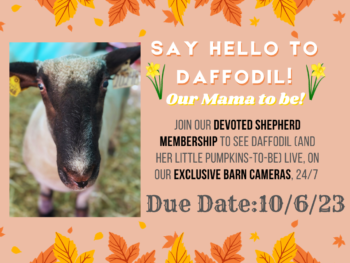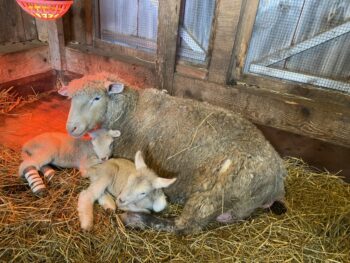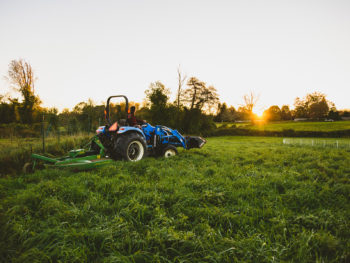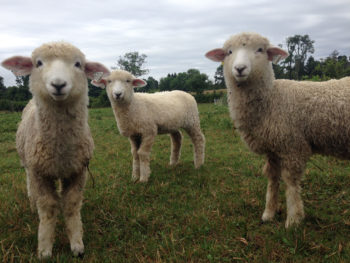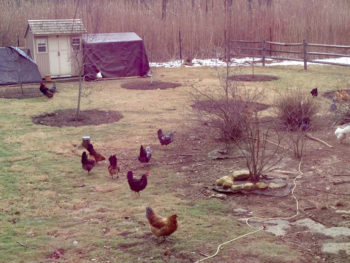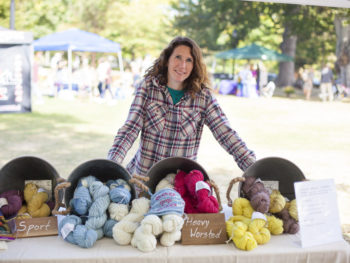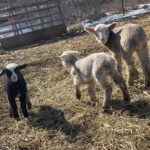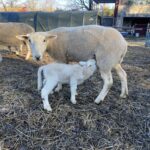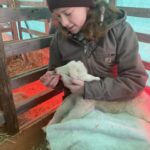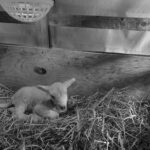
Winter is beginning to recede here in New England. Although it is officially spring our temperatures are still wavering between the high 20’s overnight and the mid-40’s to the occasional mid-50’s during the day. Now is the time when all of the parasite, bacteria and fungi start to become more active and rear their ugly faces with the livestock of the farm. Yesterday I let the chickens free range for the first time in a couple months and it did everyone a lot of good. They were all getting serious cabin fever and rather cranky with each other. And being spring as well, Rainbow the rooster is busy thinking about furthering his bloodlines through the hens (since there is nothing else to do when cooped up all day!). Poor boy, though, he looks terrible. If you listen to the video below you will hear his steady clucks telling the hens he has found some tasty food I just threw to them. He won’t eat until he thinks all of his girls have had enough to eat. Good boy.
We all love reading those chicken blogs with gorgeous pictures of roosters in all of their dramatic plumage and the hens all fluffy with their elaborate feathers. But the reality of a farm flock is rather different. First of all, having a rooster means that the most loved hens will have broken or missing feathers at the base of their back at points in the year. Yes, there are saddles and I have used them but really it provides a hiding place for mites/lice and except in extreme cases, missing feathers is not a problem to the hens it’s just not as pretty to look at for us.
Having the turkeys also means that during the winter the hens and roosters sometimes get feathers picked by the turkeys and when the turkeys get cranky they grab the hens by the comb and sometimes leave a mark. The roosters, too, get damaged combs in the winter from little scuffles. In fact, the comb damage on a rooster might make a first-time chicken owner worry about more nefarious things like fowl pox or frost bite but really the bright red comb is a convenient pecking target for bored chickens and turkeys in the winter. By spring his black scabs and marks have cleared up and his comb is lovely and red again.
So back to Rainbow and his scrappy plumage. He looks very hen-pecked. They seem to all want to mother him, peck a feather here or there that is out of place, maybe has a mite. And the turkeys peck the chickens’ feathers too–boredom.

But since roosters don’t need all of the protein in their diet to make eggs, I expect his lovely feathers to grow back this spring.
The sheep have had access to their field all winter but since they received hay in the barn twice a day and there was such deep snow outside, they did not feel the need to cross the bridge into the main expanse. This week the snow finally melted and I stood out in the field and called the sheep. I wish I had had my camera at that moment. The jumping and frolicking sheep in full wool coat was a sight that made it impossible not to laugh! I captured a little happy leap later by Annabel (below).
In the next few weeks we will take the compost pile from the sheep and goats and place it around our roses and on some fruit and vegetable plants (berries, garlic and later on the tomatoes, peppers and eggplants). Then we will empty the goat and sheep stalls completely of bedding, place it on the compost piles and give them fresh bedding. It’s also time to put down more pasture grass seed, tend to fencing and have a general tidy-up in the barn. The sheep should be shorn again in the next couple weeks. And we’ll trim hooves and do fecal tests on the animals for worms.
Jake the barn cat is embracing life again. He is in full hunting mode and was happily tossing around the end of a mouse outside our door this morning as he awaited his breakfast. Last week he dragged his hunting trophy, a stoat, into the barn through his cat flap. He only drags his big prizes (like rabbits, and now stoats) through the cat flap to show off. I took a picture of it; but wasn’t sure if you readers would be as keen to see!

Right, there is much work to be done, seeds to be sown and fiber dyes to be planned. The dogs, however, are reminding us that the snow has finally melted and their short little legs can go for walks again. Outside we go!

